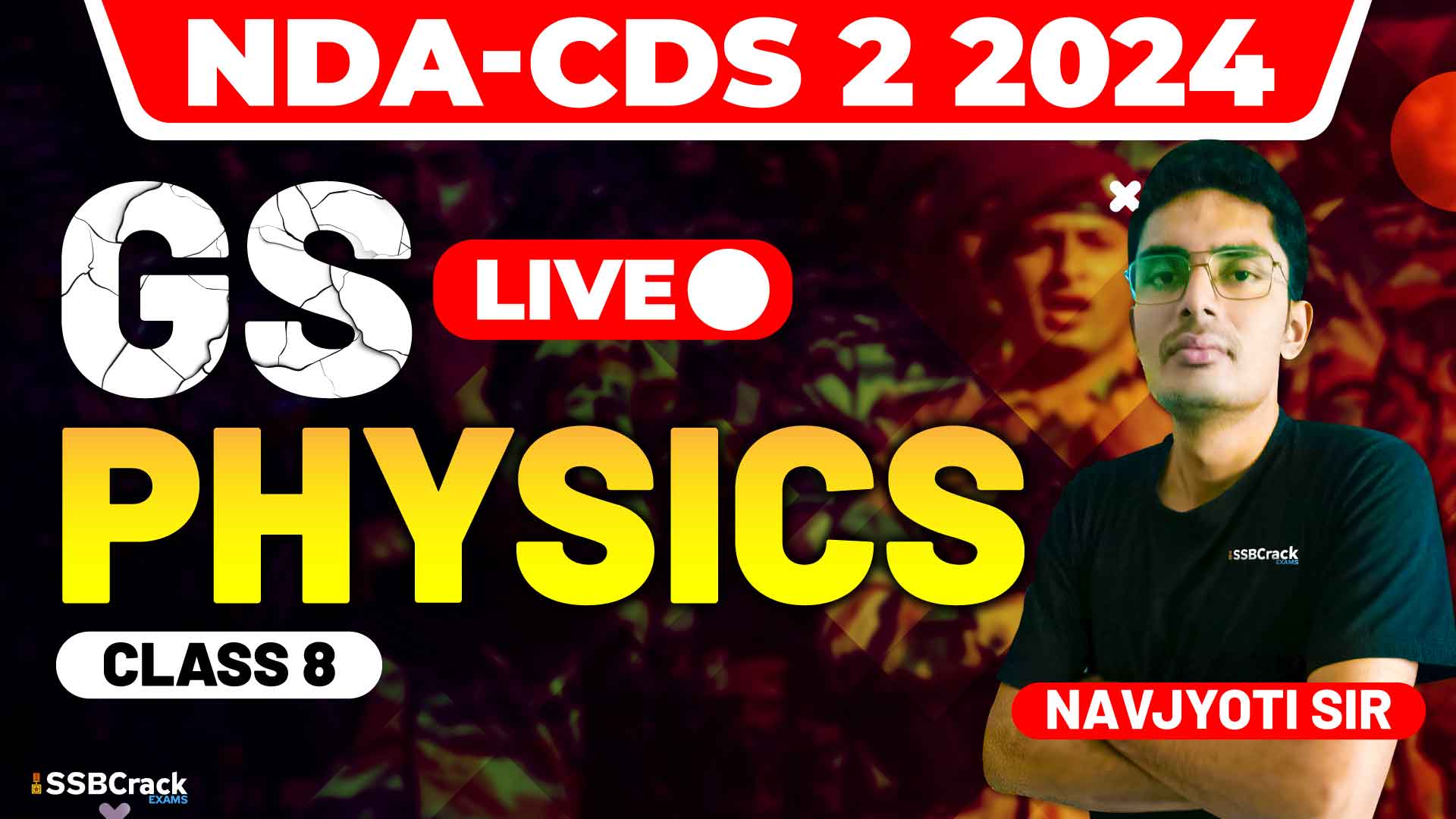In physics, the concepts of work, energy, and power are fundamental to understanding how forces interact with objects to produce motion and change. These topics are especially important for students preparing for competitive exams like the NDA (National Defence Academy) and CDS (Combined Defence Services). This article will explore key sub-topics including the concept of work, different types of energy, the work-energy theorem, conservation of energy, power, and collisions.
Concept of Work
In physics, work is done when a force causes an object to move in the direction of the force. The amount of work done is determined by the force applied and the distance over which it is applied. If there is no movement, no work is done, regardless of the amount of force applied. This concept is vital in understanding how energy is transferred and transformed in various physical processes.
Energy
Energy is the capacity to do work. It exists in various forms, including kinetic energy, potential energy, thermal energy, and chemical energy. Energy can be transferred from one form to another but cannot be created or destroyed, a principle known as the conservation of energy. Understanding different forms of energy and their transformations is crucial for analyzing physical systems and solving related problems.
Kinetic and Potential Energy
Kinetic energy is the energy an object possesses due to its motion. The faster an object moves, the more kinetic energy it has. Potential energy, on the other hand, is the energy stored in an object due to its position or configuration. For example, an object held at a height above the ground has gravitational potential energy. These two forms of energy are interrelated and can transform into each other, such as when an object falls and its potential energy converts to kinetic energy.
Work-Energy Theorem
The work-energy theorem states that the work done on an object is equal to the change in its kinetic energy. This theorem provides a direct relationship between work and energy, allowing for the calculation of an object’s velocity or position by understanding the work done on it. It is a powerful tool for solving problems involving forces and motion, particularly when dealing with variable forces.
Conservation of Energy
The principle of conservation of energy states that the total energy of an isolated system remains constant over time. Energy can neither be created nor destroyed but can change forms. This principle is fundamental in analyzing physical processes and solving problems in mechanics, thermodynamics, and other areas of physics. For instance, in a closed system, the sum of kinetic and potential energy remains constant, even as energy transforms from one form to another.
Power
Power is the rate at which work is done or energy is transferred. It is a measure of how quickly work can be performed or energy can be converted from one form to another. Power is an important concept in various applications, from mechanical engines to electrical devices. Understanding power helps in evaluating the efficiency and performance of different systems and devices.
Collisions
Collisions are interactions between two or more objects where they exert forces on each other for a relatively short duration. Collisions can be classified into two main types:
- Elastic Collisions: In these collisions, both momentum and kinetic energy are conserved. The objects involved bounce off each other without any loss of total kinetic energy.
- Inelastic Collisions: In these collisions, momentum is conserved, but kinetic energy is not. Some of the kinetic energy is converted into other forms of energy, such as heat or sound.
Analyzing collisions involves understanding the conservation laws of momentum and energy and applying them to predict the outcomes of such interactions.
Practical Applications and Exam Tips
- Master Basic Concepts: Ensure a thorough understanding of fundamental concepts such as work, energy, and power.
- Use Real-World Examples: Relating theoretical concepts to real-life scenarios, like car engines or falling objects, helps in better comprehension.
- Practice Problem-Solving: Regular practice with various problems will enhance problem-solving skills and exam readiness.
- Understand Energy Transformations: Be comfortable with identifying and analyzing different forms of energy and their transformations.
- Focus on Conservation Laws: Pay special attention to the principles of conservation of energy and momentum, as they are frequently tested in exams.
Conclusion
Understanding work, energy, and power is essential for mastering physics and excelling in NDA and CDS exams. By exploring the concepts of work, different types of energy, the work-energy theorem, conservation of energy, power, and collisions, students can build a strong foundation in this area. Regular practice, the use of real-world examples, and a solid grasp of fundamental principles will enhance comprehension and retention of these topics. With a thorough understanding of work, energy, and power, students will be well-prepared to tackle related questions and excel in their physics exams.



















